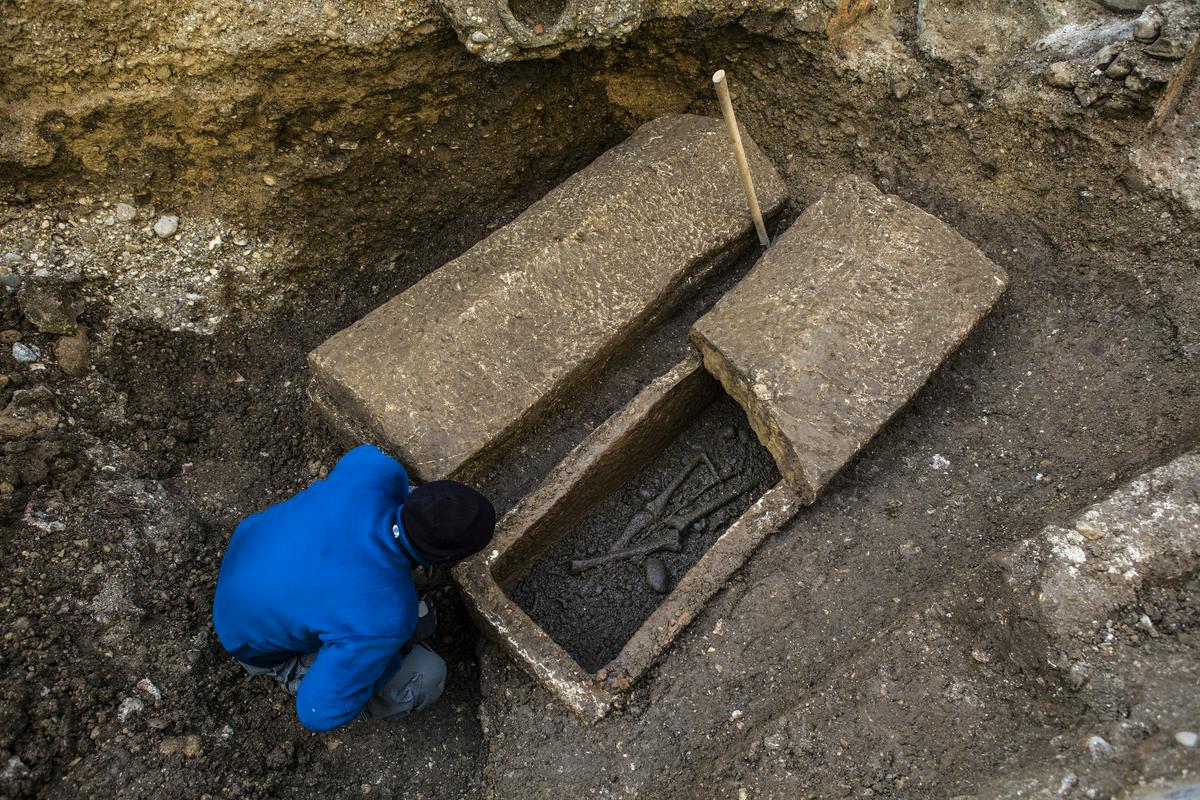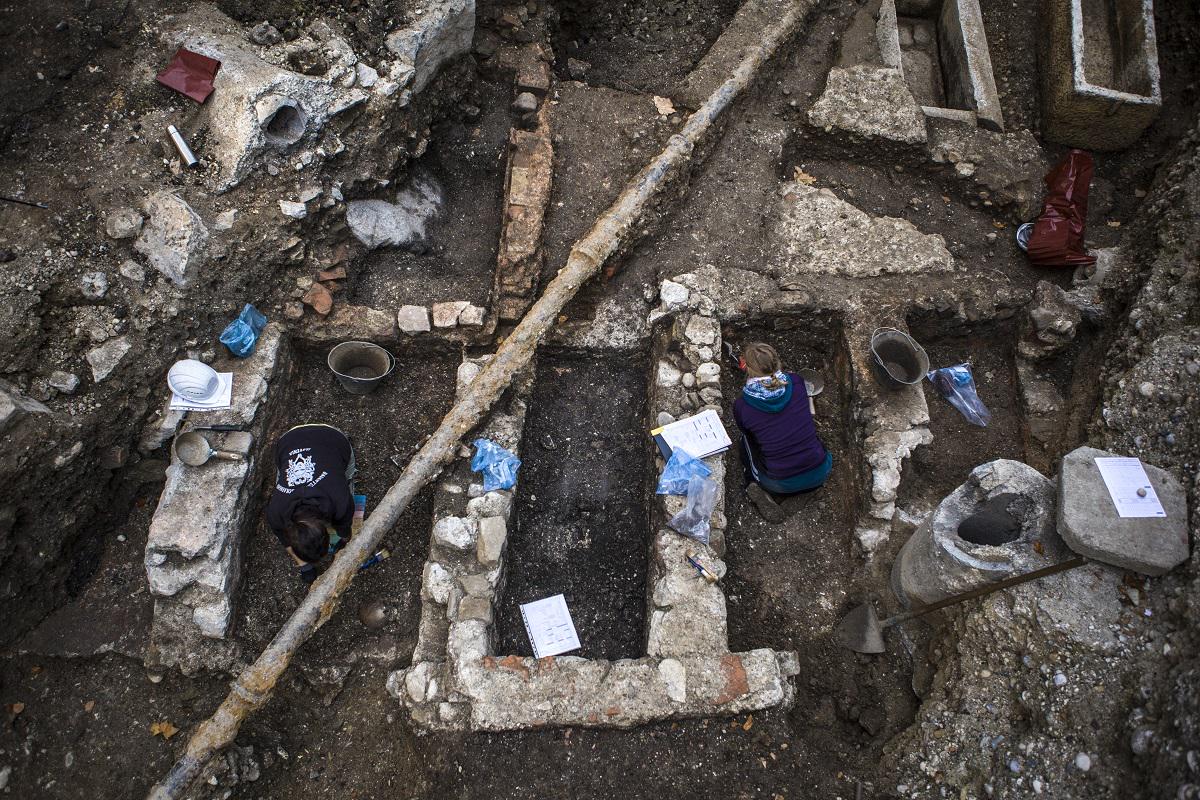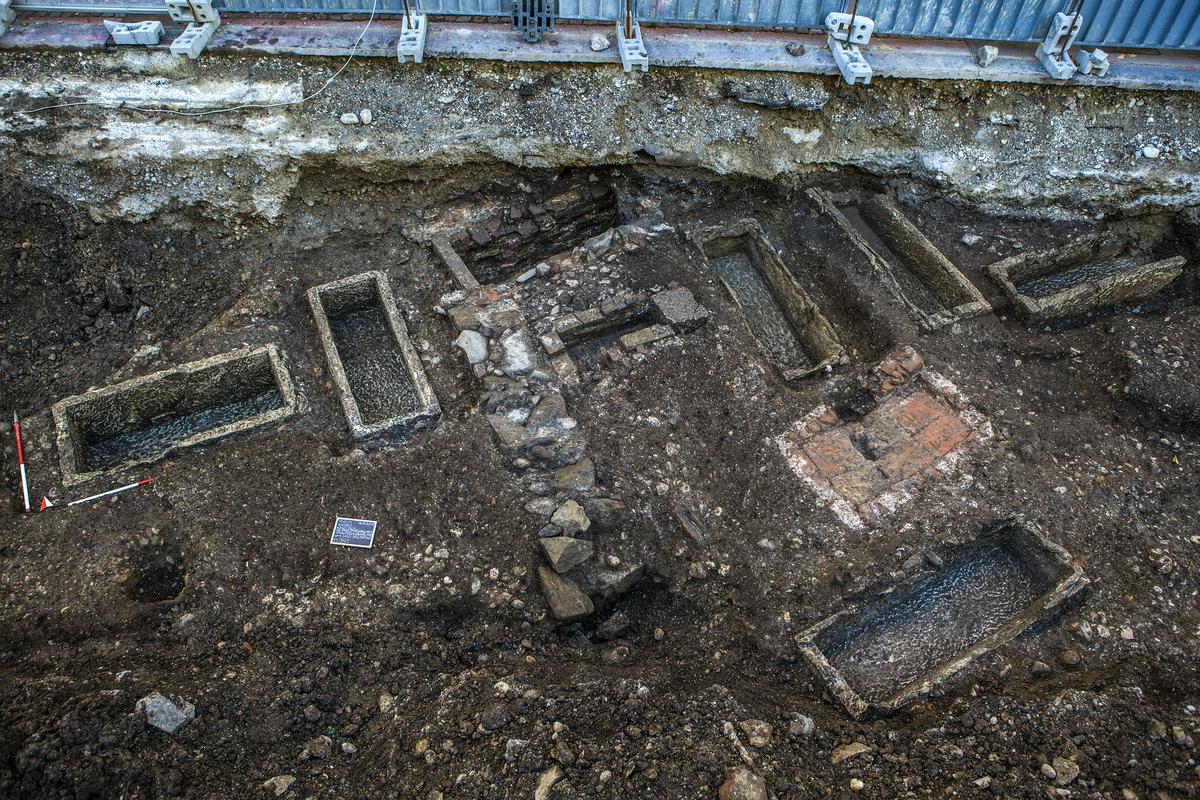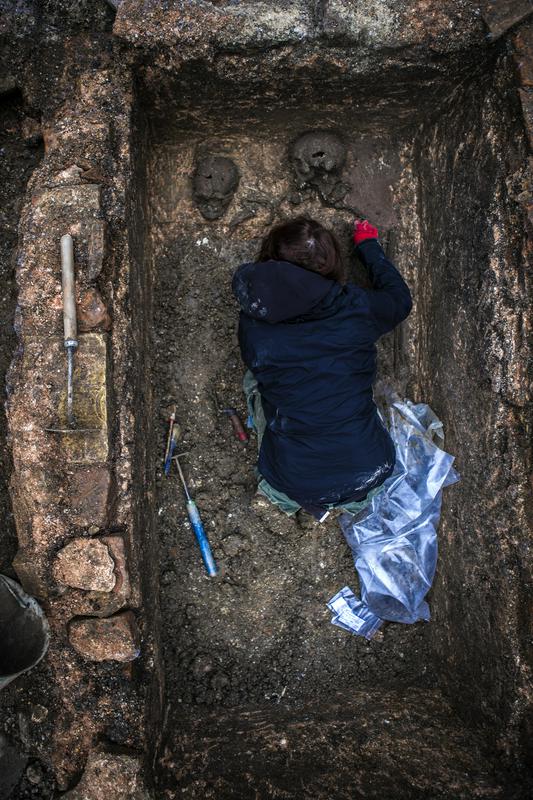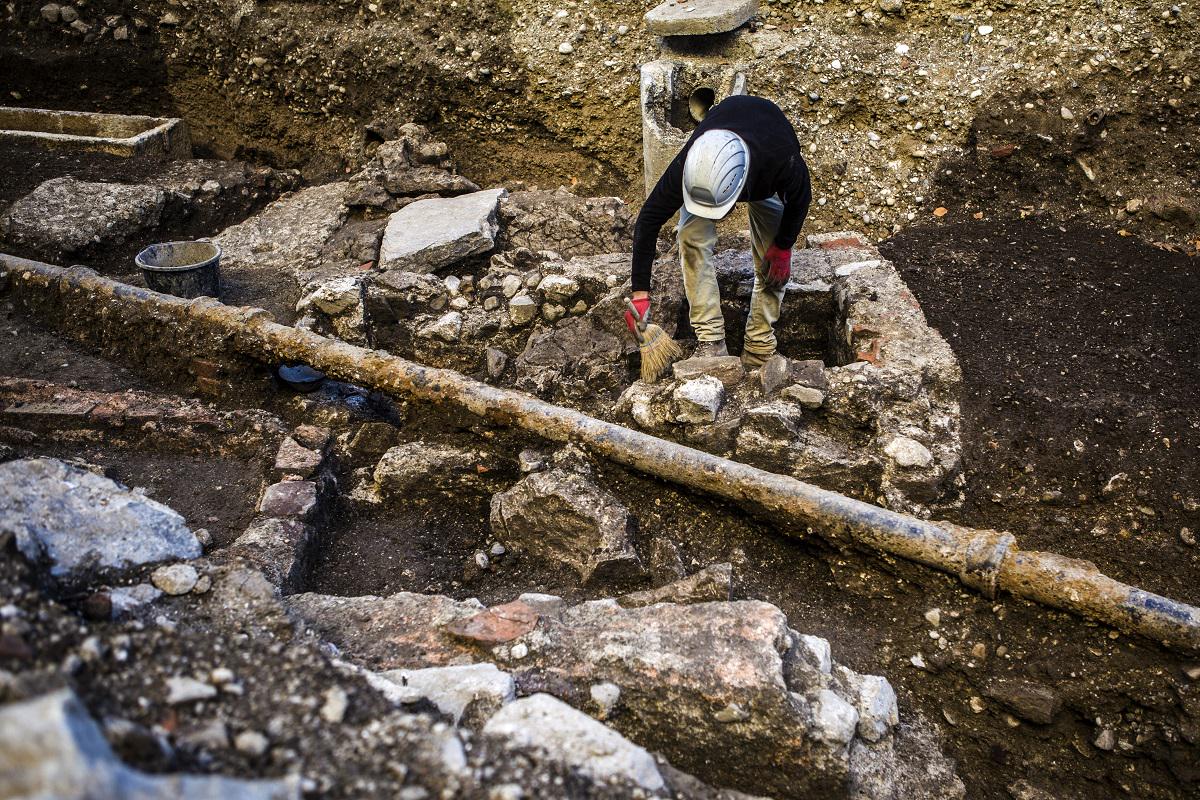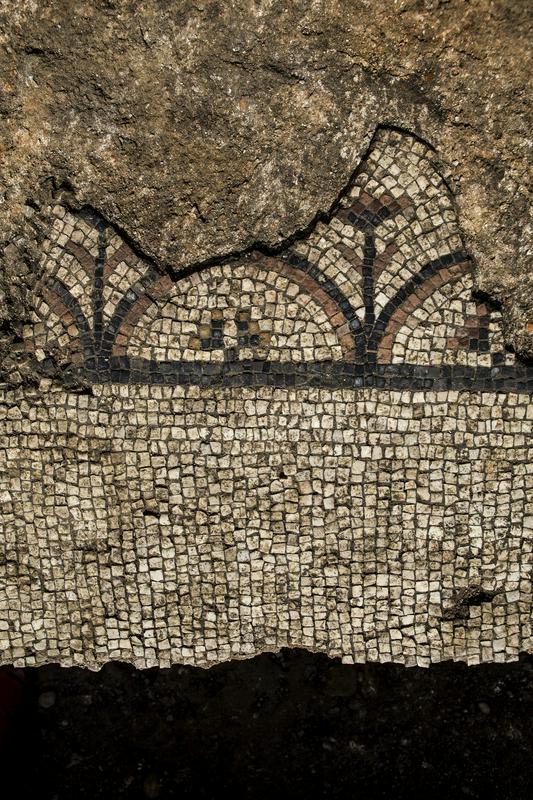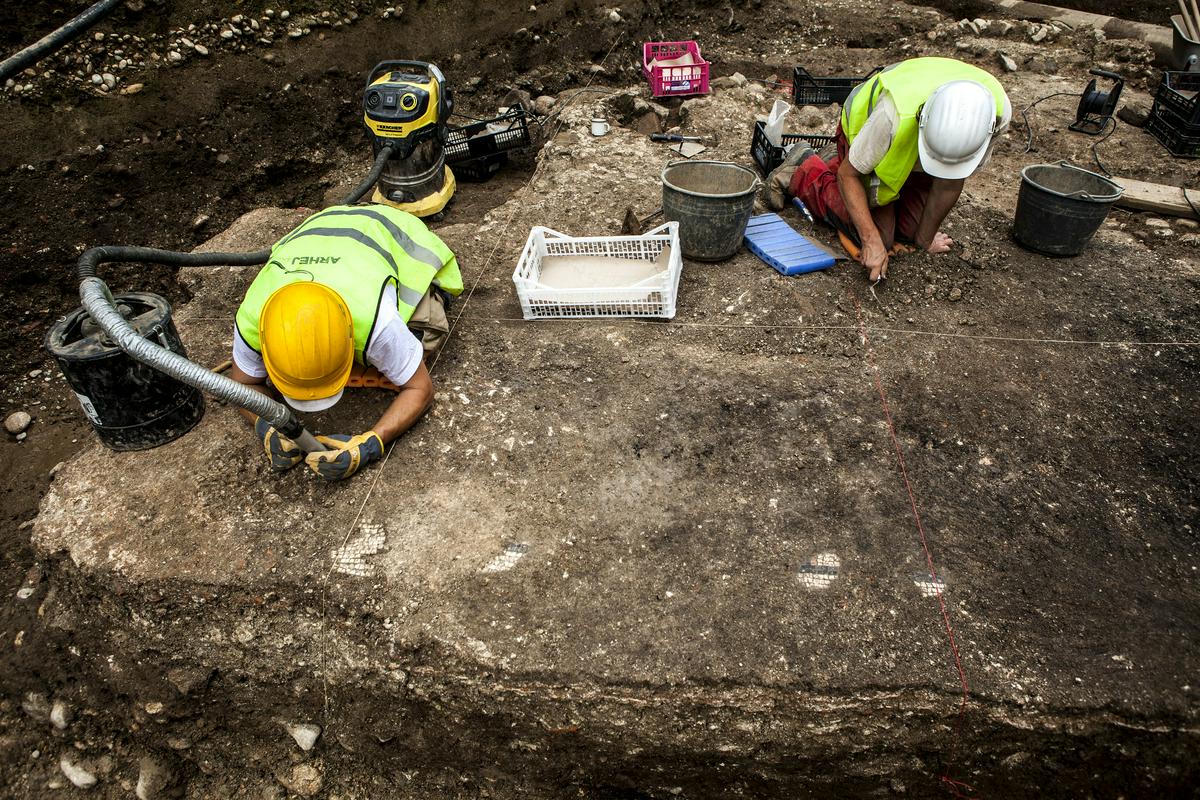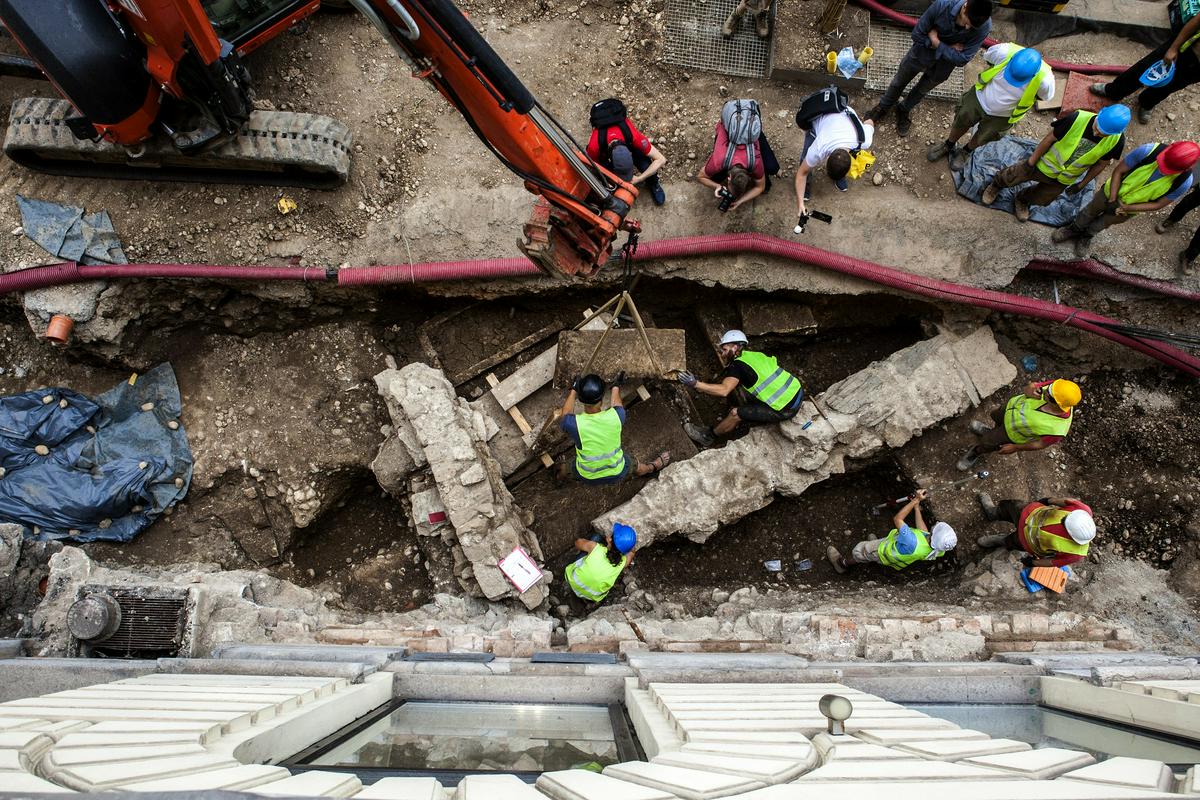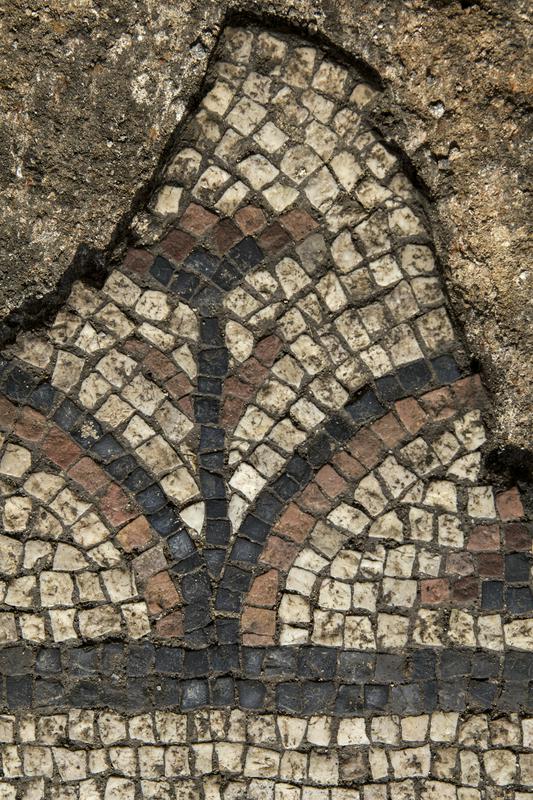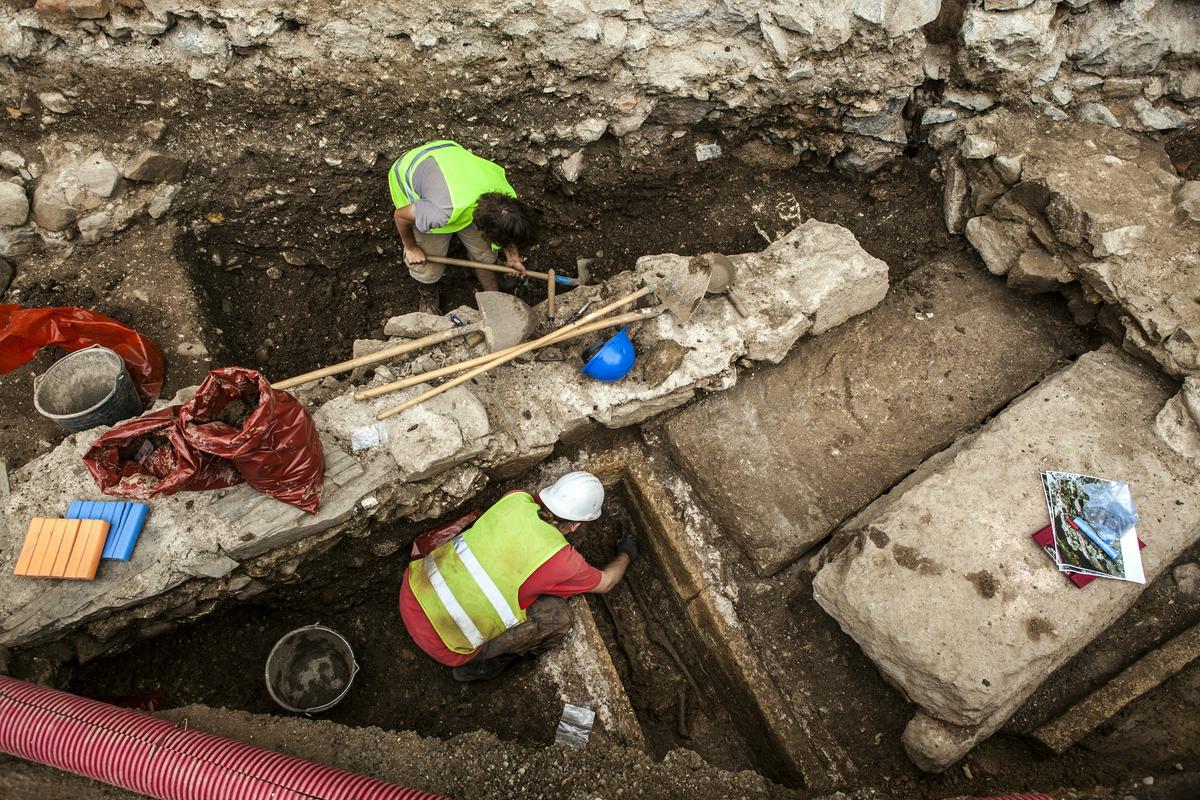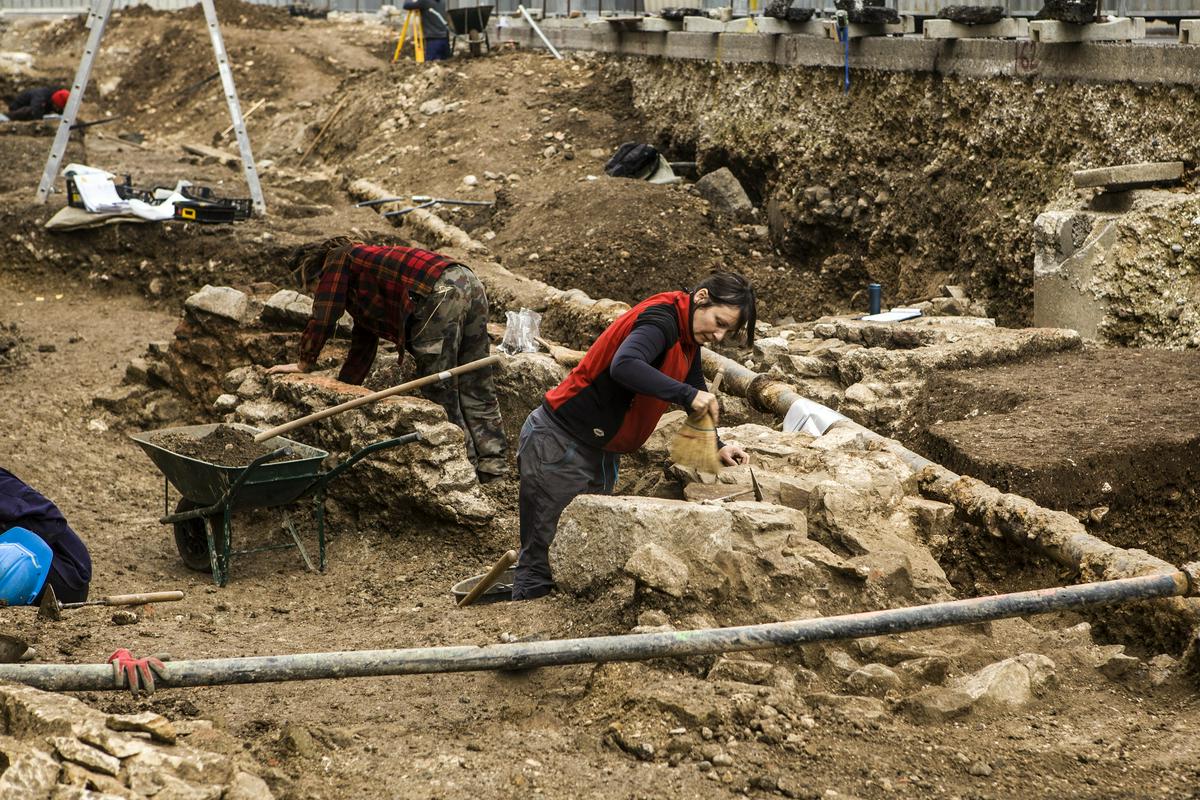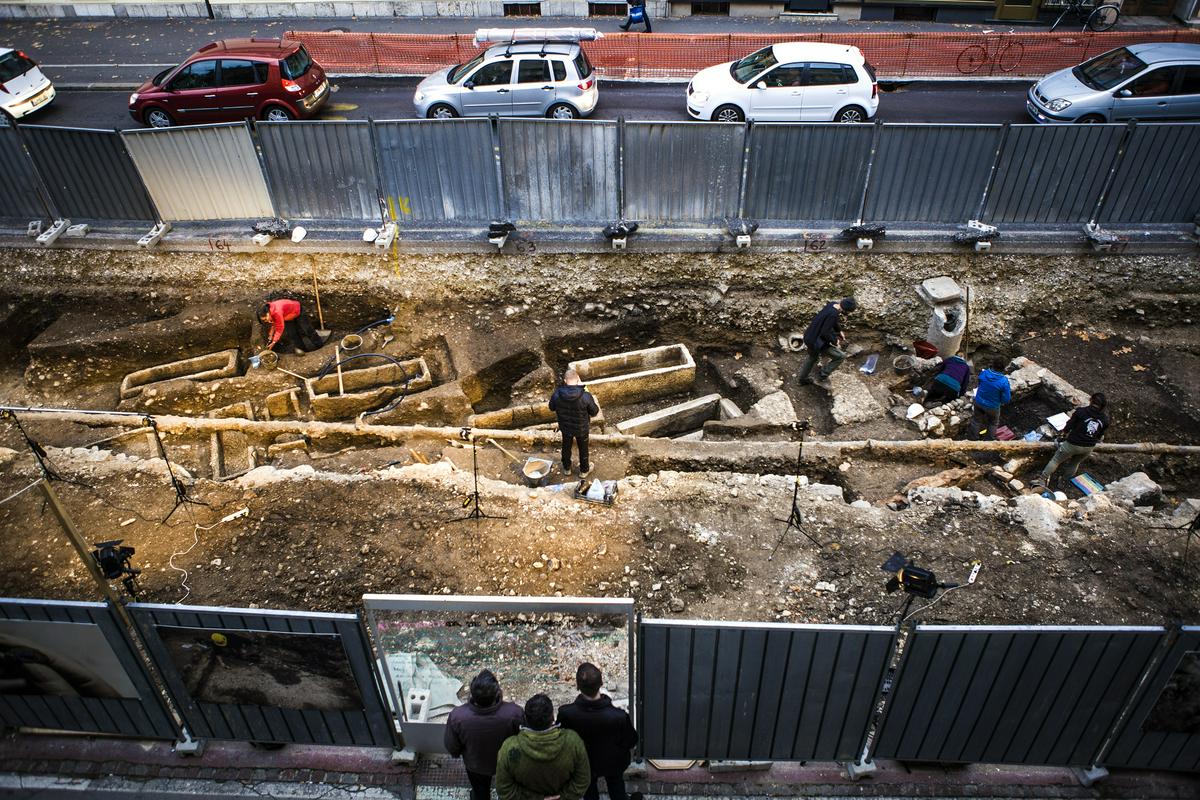
Even though the area of today's Gosposvetska street in Ljubljana is entirely beyond the walls of the Roman Emona, this part of Ljubljana was a rather special place for the population who lived then. This was where they buried the deceased and for this purpose, they created an extensive cemetery complex, which has been discovered in all its richness by the archeologist during their recent excavations. This is an exceptional finding that must be appropriately preserved and presented, they emphasize.
Archaeologists have found the important remains of the Late Roman cemetery complex during last year's and this year's archaeological excavations between Kersnik street and Slovenian street intersection. The archaeological remains show that there was a building that was (re)constructed in several phases – from the middle of 4th to the beginning of 5th century. The beginning of the construction started several decades after the Edict of Tolerance, when several Christian communities lived in Emona.
First organized religious life in this area started back in the 3rd century with the rise of Christianity, however, early Christian community of Emona became more active only after the end of the 4th century, when the new religion replaced the other ones. That was when more centers and churches were established, and this specific complex stands out.
Several sarcophagi were found on the previously mentioned area, more than 350 buried skeletons, and remains of a sacral building, which plays an important role in the early Christian architecture.




















































